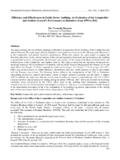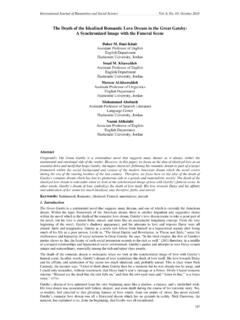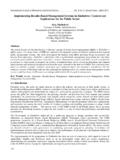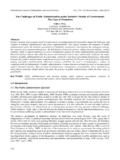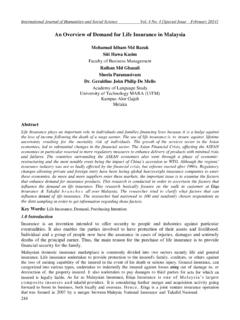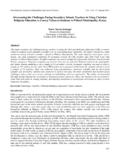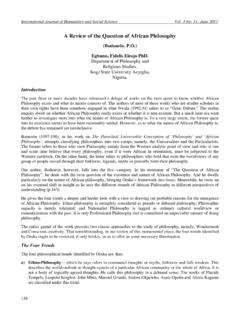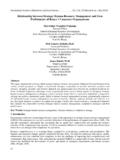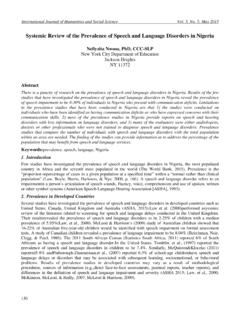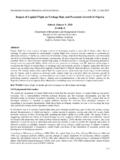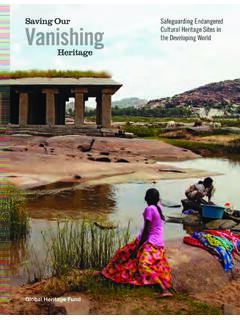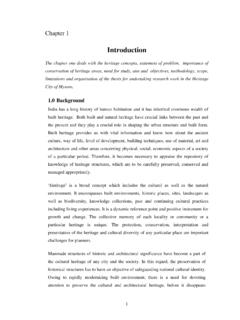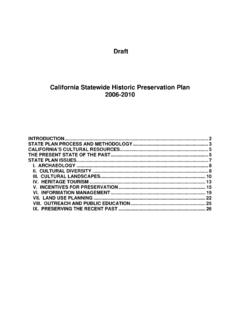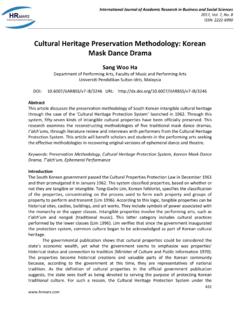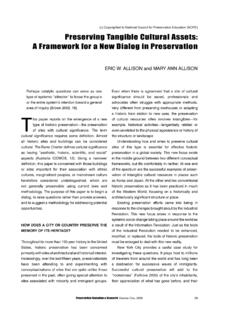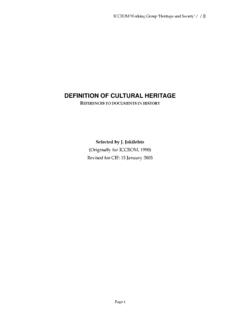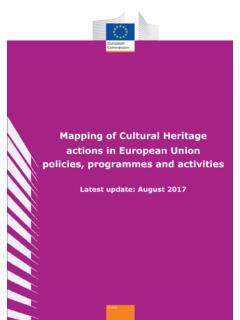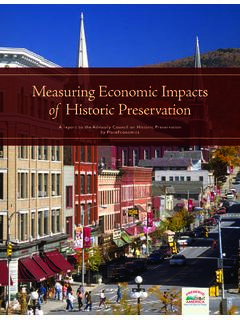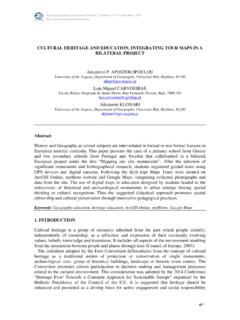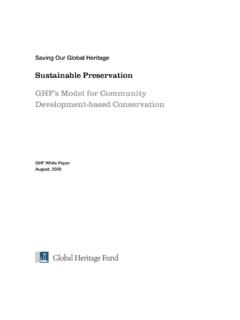Transcription of Basic Education and Cultural Heritage: Prospects and ...
1 International Journal of Humanities and Social Science Vol. 4, No. 9; July 2014 201 Basic Education and Cultural heritage : Prospects and Challenges Mercedes Camille B. Ocampo Department of Sociology and Anthropology College of Social Sciences and Development Polytechnic University of the Philippines Anonas Street, Manila Philippines Pauline I. Delgado Department of Sociology and Anthropology School of Social Sciences Ateneo de Manila University Katipunan Avenue Quezon City Philippines Abstract Cultural heritage and Sustainable development goes hand in hand. However, Cultural heritage could only function as a conduit of sustainable development through proper Education in order to raise awareness of its importance.
2 This paper explored how to effectively teach local Cultural heritage of Nasugbu and Balayan, Batangas to grade school and high school students within the existing framework of the K-12 Curriculum. The general structural inadequacies of the Philippine Basic Education system are highlighted as these greatly affect the teaching of the local Cultural heritage of the two towns. Keywords: Cultural heritage , Philippine Basic Education , K-12 curriculum 1. Introduction It has already been argued that any development that is not entrenched and weaved through the local people s consciousness, traditions, and values is bound to fail (Zerrudo, 2005).
3 During the 1982 UNESCO World Conference on Cultural Policies, development was defined as a complex, comprehensive and multidimensional process which extends beyond mere economic growth, to incorporate all dimensions of life and all the energies of a community, all of those whose members are called upon to make a contribution and expect to share in the benefits (Sta. Maria, 2001 ). Thus, it is imperative to include the dimensions of culture and heritage when drafting policies on national development. This is where Cultural heritage finds its significance. Cultural heritage has been defined as all the beliefs, values, practices, and objects that give a place its own specific character (Zialcita, 2007, ).
4 With this, the importance of heritage conservation cannot be overstated. In sustaining the value, meaning and significance of Cultural resources from the past, for the use of the present and inspiration of future generations (Zerrudo, 2008), development becomes sustainable as it directly spring from the people and is appropriate to the local communities. However, the process of Cultural conservation is entwined with the issue of awareness. We cannot expect local communities to conserve something that they are not aware of. Therefore, the process of heritage conservation brings fort the importance of Education . RA 10066 also known as The National Cultural heritage Act of 2009 mandates the Department of Education , in coordination with the National Commission on Culture and the Arts (NCCA) Philippine Cultural Education Program (PCEP), to formulate the Cultural heritage Education programs both for local and overseas Filipinos to be incorporated in the formal, alternative and informal Education , with emphasis on the protection, conservation and preservation of Cultural heritage properties (Article X, Section 38).
5 Center for Promoting Ideas, USA 202 Responding to the requirement set by law, the Department of Education utilized the data from the National Cultural Mapping Project of NCCA PCEP to create the SAGISAG KULTURA NG PILIPINAS (SKP), the essential Knowledge on Philippine Arts, Culture and heritage in the then Basic Education Curriculum (BEC) (NCCA,2014). With the shift in the new K-12 curriculum, steps in developing a culture-based curriculum with emphasis on mother-tongue instruction and learning approach were evident.
6 Although the K-12 Curriculum is already on its third year of implementation, criticisms and scrutiny on its substance and implementation abound (Pooten, 2012). It is within this context that this paper operates. This study focuses on the teaching of Cultural heritage in the elementary and high school level while problematizing the present condition of our Basic Education system. Research Question Within the backdrop of the Basic Education System of the Philippines and the increasing importance of Cultural heritage in sustainable development, this paper problematizes the question: how can we effectively teach local Cultural heritage of Nasugbu and Balayan, Batangas to grade school and high school students within the existing framework of the K-12 Curriculum?
7 Objectives This paper generally seeks to find ways of including elements of Nasugbu and Balayan s local Cultural heritage on the existing curriculum of local elementary and high schools of the towns. Specifically, it seeks to: 1. Know the present situation of Basic Education in Nasugbu and Balayan; 2. Know the topics on local culture and history being discussed in Grade 6 and Grade 7; 3. Identify core competencies and skills being developed on the given grade levels; 4. Identify effective teaching strategies and materials; 5. Identify problems and limitations encountered by the teachers; 6. Contribute to the existing literatures on Basic Education and Cultural heritage .
8 Significance Development emphasizes public participation in Cultural heritage activities to ensure sustainability (Zerrudo, 2008, ). heritage appreciation is nurtured through community organizing and capacity building. An important step towards community organizing is Education . By knowing how to integrate local Cultural heritage within the framework of the K-12 curriculum, students are better equipped in participating on projects of sustainable development rooted on local culture and traditions. Corollary, this paper can serve as a starting point of a more comprehensive study on Basic Education and Cultural heritage which can provide insights in and making pedagogical decisions and drafting Education policies and laws.
9 Limitation The context within which this paper operates is limited only to the two towns of Batangas Nasugbu and Balayan. It does not intend to draw a picture of the entire Basic Education System of the Philippines but is solely focus on the experience of local elementary and high school teachers from the two towns. As such, the generalizability of this study is limited; aggravated by the fact that qualitative methodology was used. 2. Summary of Related Literature Judging by the plethora of local studies published in recent years regarding the importance of Cultural heritage , researches that examine effective ways of integrating local heritage in the Basic Education subjects remain sparse.
10 However, foreign literatures available on the subject matter at hand mostly offer a discussion on the importance of such integration. For example, a study stressed the importance of culturally relevant pedagogy as it uses Cultural references that develop a student s identity thereby empowering him academically, socially, and politically (Wu, 2011). Further, M ndez (2006) highlighted the effectiveness of using the students heritage to improve academic achievement in writing as it validates their lives and experiences. A study even highlighted the importance of culture and Cultural heritage themes in non-traditional Education setup as it fosters teamwork attitudes and leadership, research and presentation skills (Alkateb, 2013).
